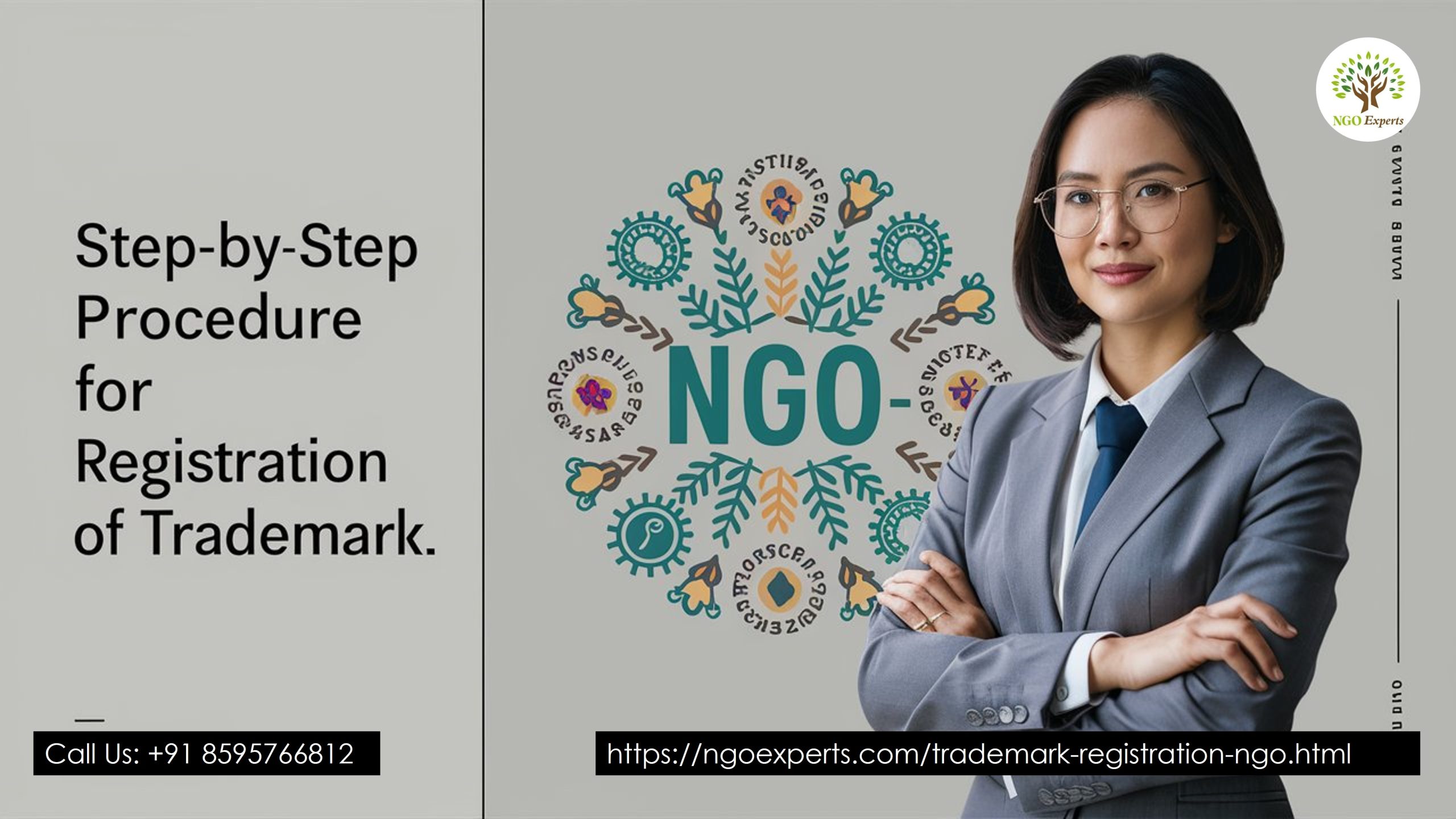Registering a trademark is crucial for protecting your brand’s identity, whether you run a business, NGO, or Section 8 company. Securing a trademark ensures that your name, logo, or symbol is legally protected from being copied or misused. Komal Ahuja, a legal consultant associated with NGO Experts, specializes in guiding NGOs and companies through the legal processes, including trademark registration. Let’s walk through the procedure for registration of a trademark.
Why Register a Trademark?
procedure for registration of trademark offers legal protection. It prevents unauthorized use of your brand by competitors or others in the market. Whether you run an NGO or a Section 8 company, a trademark protects your identity. The process involves registering your brand’s distinctive symbol, name, or tagline, ensuring it remains unique to your organization.
Step 1: Conduct a Trademark Search
The first step in the procedure for registration of a trademark is conducting a search. This search ensures that no other entity has already registered a similar or identical mark. It helps avoid disputes and potential rejections later in the process.
You can conduct the search online using the government’s trademark database. Komal Ahuja at NGO Experts can help with this, ensuring the search is thorough. If your desired trademark is available, you can proceed with the registration process.
Step 2: Prepare the Application
Once you confirm that your trademark is unique, the next step is to prepare the application. The application must include:
-
Applicant’s name and address
-
Trademark details (logo, name, or tagline)
-
Class of goods or services
-
Power of attorney (if applying through an agent)
Komal Ahuja ensures all the details are correctly filled out, minimizing the risk of rejection. Proper documentation is key to a smooth process, and any mistakes at this stage can lead to delays.
Step 3: Filing the Application
After preparing the application, you file it with the Registrar of Trademarks. This can be done online, which speeds up the process. The Registrar will provide you with an acknowledgment receipt containing the application number. With this, you can start using the ™ symbol next to your trademark.
Filing the application involves paying a fee, which varies depending on the applicant’s entity type. For NGOs or Section 8 companies, the fee is usually lower than for private businesses.
Step 4: Examination of the Application
After you submit your application, the Registrar will examine it. The examination checks if the trademark meets all legal requirements and doesn’t conflict with any existing marks.
If the Registrar finds any issues, they may raise objections. In such cases, you must respond to the objections within the stipulated time frame. With the help of a legal consultant like Komal Ahuja, you can effectively address objections and avoid unnecessary delays.
Step 5: Publication in the Trademark Journal
Once the examination is completed, your trademark will be published in the Trademark Journal. This step is essential for public transparency. If no opposition is filed by the public within four months of publication, the trademark proceeds to registration.
However, if someone opposes your trademark, you must defend it through a legal hearing. This stage is crucial for securing your trademark and having expert guidance helps ensure that your rights are protected.
Step 6: Registration Certificate
If there are no objections or oppositions, or if you successfully defend against them, the Registrar will issue a registration certificate. You can now use the ® symbol next to your trademark, signifying that your trademark is officially registered and legally protected.
With the registration complete, you can confidently use your trademark, knowing it is secured against unauthorized use.
Why Choose Expert Guidance?
Komal Ahuja at NGO Experts provides comprehensive guidance throughout the procedure for registration of a trademark. From the initial search to defending against objections, having an expert on your side makes the process smoother and faster.
Trademark registration is especially crucial for NGOs and Section 8 companies. It protects your brand identity, giving your organization legal recognition and credibility. NGO Experts also assist with other legal processes such as 12A and 80G registration and Section 8 company registration, offering complete support to organizations aiming to establish themselves in a competitive environment.
Conclusion
Trademark registration is a vital process for securing your organization’s identity. Whether you run an NGO or a section 8 company registration, understanding the procedure for registration of a trademark helps protect your brand and adds to your organization’s credibility. With the right guidance, the process is smooth and ensures long-term legal protection.




